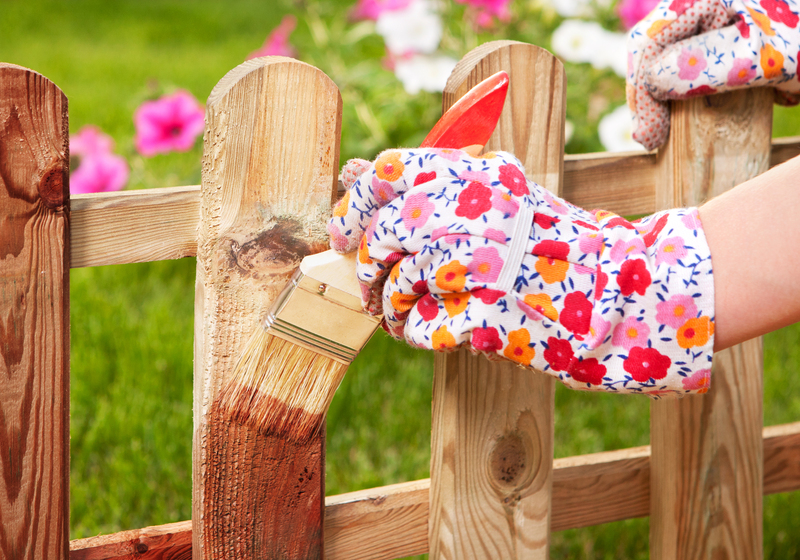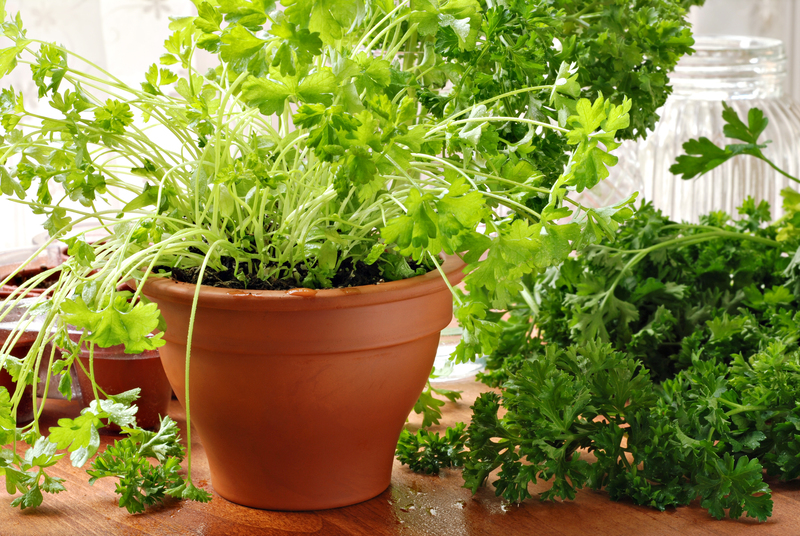Your Guide to Mastering Container Gardening
Posted on 05/09/2025
Your Guide to Mastering Container Gardening
Container gardening is an accessible, enjoyable, and versatile way to grow plants almost anywhere. Whether you have a sprawling backyard, a compact balcony, or even just a sunny windowsill, mastering the art of gardening in containers opens up a world of horticultural possibilities. This comprehensive guide will equip you with proven tips, techniques, and insights to help you become proficient in container plant care, beautifying your space and even growing fresh foods.
Why Choose Container Gardening?
The rise in urban living and limited outdoor spaces has made container gardening increasingly popular among home gardeners. Here are the top reasons why you should consider cultivating plants in pots, boxes, or other vessels:
- Flexibility: Move plants for optimum sunlight or shelter them from harsh weather.
- Space-saving: Garden vertically or in small spaces, perfect for apartments or patios.
- Pest and disease control: Isolate plants to minimize contamination and manage pests.
- Soil management: Use the best soil mixes specifically tailored for your chosen plants.
- Seasonal experimentation: Try new varieties and swap plants with the seasons easily.
- Aesthetic appeal: Add beauty and greenery to plain or paved areas.

Getting Started: Choosing the Right Containers
Selecting suitable containers is crucial when setting up your container gardening solutions. The vessel you use not only affects the health and growth of your plants but also impacts the look of your gardening area.
Here are important factors to consider when picking containers:
- Size Matters:
- Bigger containers hold more soil, retain more moisture, and allow deeper roots.
- Match the container size to your plant's mature size needs.
- Material Choices:
- Terracotta: Breathable, classic, but dries out faster.
- Plastic: Lightweight, affordable, retains moisture well.
- Ceramic: Beautiful and durable but can be heavy.
- Metal or Wood: Sleek and rustic choices; ensure wood is rot-resistant.
- Drainage is Essential: Ensure pots have adequate holes to prevent root rot.
- Consider Mobility: Large containers can be hard to move. Use caddies with wheels or keep them in permanent locations.
The Art of Proper Potting Mix
Soil is the life force of your container garden. Never use regular garden soil in your pots, as it can be too dense and poorly drained for containerized plants.
Essential Ingredients for Ideal Potting Mixes
- Peat moss or coconut coir - for water retention and lightness
- Perlite or vermiculite - for aeration and drainage
- Compost or slow-release fertilizers - for nutrients
- Some mixes may include bark fines for improved texture
Tip: Purchase high-quality potting soil specifically formulated for containers, or blend your own using the components above.
Best Plants for Container Gardening Success
One of the joys of container gardening is the immense variety of plants you can grow. Whether you desire a lush flower display, edible vegetables, aromatic herbs, or sculptural succulents, there's something for every gardener and every growing condition.
Popular Choices for Container Gardens
- Herbs: Basil, thyme, chives, parsley, mint, cilantro, and rosemary thrive in pots and are handy for the kitchen.
- Vegetables: Tomatoes, peppers, lettuce, spinach, radishes, and even potatoes can be grown in containers.
- Flowers: Geraniums, petunias, pansies, marigolds, begonias, and impatiens brighten up any space.
- Small fruits: Strawberries, blueberries (in acidic soil), dwarf citrus, and figs are perfect for patio pots.
- Ornamentals: Grasses, ferns, succulents, cacti, and bonsai make striking container statements.
Mastering the Basics of Container Plant Care
Water Wisely
Containers dry out more quickly than garden beds. Regular and attentive watering is crucial. Check soil moisture by sticking your finger about an inch into the soil; if it feels dry, it's time to water.
- Water deeply until excess moisture drains from the bottom.
- Early morning watering is ideal to reduce evaporation.
- Use saucers, wicking systems, or self-watering pots to help retain moisture.
Nourish with Fertilizer
Container plants quickly use up available nutrients. For vigorous growth, it's important to supplement regularly:
- Apply a balanced, water-soluble fertilizer every 2-4 weeks during the growing season.
- Consider time-release granular fertilizers for low-maintenance nourishment.
- Organic options: use compost tea or fish emulsion for gentle, natural feeding.
Light and Temperature Requirements
Place pots according to your plant's specific sunlight needs. Some thrive in full sun, while others prefer partial shade. Be mindful of temperature extremes--which containers are more sensitive to than ground plantings:
- Shield containers from harsh midday sun if needed.
- Protect roots from freezing with insulation or by moving pots indoors during frosty weather.
Designing Stunning Container Arrangements
Container gardening offers endless design potential. Create visual interest with combinations of colors, textures, heights, and growth habits.
The "Thriller, Filler, Spiller" Formula
- Thriller: The bold, central plant (e.g., canna lily, dracaena, or salvia)
- Filler: Mounding plants that fill the space (e.g., coleus, petunia, or impatiens)
- Spiller: Trailing varieties that cascade over the sides (e.g., sweet potato vine, ivy, or lobelia)
Mix plants with similar light and water needs for best results.
Troubleshooting Common Container Gardening Issues
Even seasoned container gardeners encounter challenges. Knowing how to identify and resolve issues quickly will help your plants stay healthy and productive.
- Yellowing leaves: Usually a sign of water stress--too much, or too little. Check soil moisture and drainage.
- Wilting: Indicates under or over-watering, or perhaps root-bound plants--repot if necessary.
- Stunted growth: Fertilizer may be needed, or roots may be crowded.
- Pest infestations: Isolate affected containers; use soapy water, neem oil, or insecticidal sprays as needed.
- Fungal diseases: Space pots for good air circulation, avoid wetting foliage, and remove infected leaves promptly.
Seasonal Tips for Year-Round Container Gardening
With the right strategies, your container garden can thrive in every season.
Spring
- Refresh soil and top-dress existing containers with compost or new potting mix.
- Begin sowing cool-season crops and early flowers.
- Repot root-bound perennials, dividing if necessary.
Summer
- Water frequently; containers dry out quickly in hot weather.
- Deadhead flowers to encourage reblooming.
- Feed with liquid fertilizer to maintain vigorous growth.
Autumn
- Switch to cool-season annuals or edibles like pansies, kale, or Swiss chard.
- Clean up spent summer plants.
- Move sensitive containers inside before frost.
Winter
- Group pots together for extra insulation or wrap them in bubble wrap or burlap.
- Grow hardy evergreens, conifers, or winter flowering plants.
- Keep soil slightly moist, as winter winds can dry out containers.
Advanced Tips for Mastering Container Gardening
- Succession planting: Rotate fast-growing crops for continuous harvests.
- Vertical gardening: Use trellises, hanging baskets, or stackable pots to maximize small spaces.
- DIY self-watering systems: Repurpose bottles or use wicking tubs to reduce maintenance.
- Integrated pest management: Attract beneficial insects, use companion planting, and minimize chemical interventions.
Eco-Friendly Container Gardening Practices
- Repurpose old buckets, crates, or cans as unique planters.
- Opt for organic fertilizers and natural pest control solutions.
- Collect rainwater for watering your container plants.
- Choose native or drought-tolerant plants to conserve water.

Container Gardening FAQs
1. Can I reuse potting soil from last season?
Yes, but refresh it first. Remove old roots, add fresh compost or fertilizer, and make sure it's well-aerated. Be cautious if last season's plants suffered from disease.
2. How often should I water my container garden?
Frequency depends on weather, container size, and plant type. In summer, daily watering may be necessary; in cooler months, 2-3 times per week may suffice. Check moisture regularly.
3. Do all containers need drainage holes?
Absolutely! Without drainage, water can accumulate and cause root rot. If your chosen vessel lacks holes, drill some or use as a decorative cachepot (outer pot) and place a smaller, draining pot inside.
4. What are the best vegetables for beginner container gardeners?
- Lettuce
- Radishes
- Cherry tomatoes
- Peppers
- Spinach
- Herbs like basil, parsley, and thyme
5. Can I grow trees in containers?
Yes! Choose dwarf or patio varieties, and provide a large, sturdy pot. Figs, citrus, olive, and some maples thrive in containers.
Conclusion: Cultivate Your Own Container Oasis
Mastering container gardening is both rewarding and practical, enabling everyone to enjoy the pleasures of plants regardless of space or experience. From selecting the perfect pots to nurturing vibrant blooms or bountiful vegetables, the steps above will set you firmly on the path to container gardening success.
Embrace experimentation, learn from challenges, and watch your patio, balcony, or window ledge transform into a lush, personalized haven. With creativity, curiosity, and care, you can make the most of every inch and every season--one container at a time.
If you're ready to start your own journey, gather your pots, potting mix, and favorite seeds, and let your container garden flourish!



